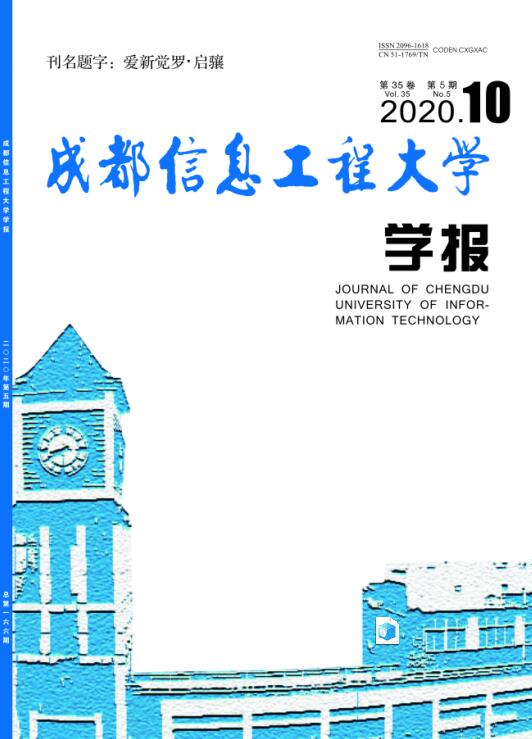YIN Lihao,ZHANG Xiaoling,FAN Jin,et al.Analysis of PM2.5 Transport Trajectory and Potential Source Areas in Five Cities in Northeast Sichuan[J].Journal of Chengdu University of Information Technology,2024,39(02):246-254.[doi:10.16836/j.cnki.jcuit.2024.02.017]
川东北五市PM2.5输送轨迹及潜在源区分析
- Title:
- Analysis of PM2.5 Transport Trajectory and Potential Source Areas in Five Cities in Northeast Sichuan
- 文章编号:
- 2096-1618(2024)02-0246-09
- Keywords:
- PM2.5; PSCF; CWT; backward trajectory; Northeast Sichuan
- 分类号:
- X513
- 文献标志码:
- A
- 摘要:
- 基于全球数据同化预报系统数据(GDAS)资料和气象数据,分析川东北五市广元、巴中、达州、南充和广安PM2.5的污染特征、传输途径和污染源分布。通过HYSPLIT后向轨迹模型模拟五市2015-2020年冬季(12-2月)的逐日48 h的气流后向轨迹,同时进行聚类分析,并使用潜在源贡献因子(PSCF)方法和浓度加权轨迹(CWT)方法识别川东北地区的PM2.5的潜在污染源区,分析PM2.5质量浓度的区域性污染特点及其输送特征。结果表明,研究期间川东北五市的污染物总体呈现下降趋势,其中PM2.5和PM10下降幅度较大, PM2.5污染最严重的季节出现在冬季。后向轨迹表明,五市的污染轨迹均以近距离输送为主。通过潜在源区分析表明广元的主要源区为巴中和南充,巴中的主要源区位于广元南部、南充北部及达州中部地区,达州的主要源区为巴中南部、南充的东南部及重庆的北部地区,南充的主要源区在广元南部、巴中南部、达州的中南部、广安及重庆的中西部和遂宁,广安的主要源区主要在达州中部、南充及重庆的中部地区。
- Abstract:
- Based on the Global Data Assimilation Forecasting System(GDAS)data and meteorological data, this paper analyzes the PM2.5 pollution characteristics, transmission routes and pollution sources distribution among five cities in northeastern Sichuan, Guangyuan, Bazhong, Dazhou, Nanchong and Guang’an. The 48 h daily airflow backward trajectories of five cities in the winter of 2015-2020(December to February)were simulated by the HYSPLIT backward trajectory model, and cluster analysis was performed at the same time, and the potential source contribution function(PSCF)method and the concentration weighted trajectory(CWT)analysis method identifies the potential pollution source areas of PM2.5 in northeastern Sichuan, and analyzes the regional pollution characteristics and transport characteristics of PM2.5 mass concentration. The results showed that during the study period, the pollutants in the five cities generally showed a downward trend, among which PM2.5 and PM10 decreased significantly, and the season with the most serious PM2.5 pollution occurred in winter. The backward trajectory shows that the pollution trajectories of the five cities are dominated by short-range transportation. The analysis of potential source areas shows that the main source areas of Guangyuan are Bazhong and Nanchong, the main source areas of Bazhong are located in the south of Guangyuan, the north of Nanchong and the central area of Dazhou, and the main source areas of Dazhou are the south of Bazhong and the southeast of Nanchong. The main source areas of Nanchong are in southern Guangyuan,southern Bazhong, central and southern Dazhou, Guang’an, and the central and western parts of Chongqing and Suining. The main source areas of Guang’an are mainly in central Dazhou,Nanchong and central Chongqing.
参考文献/References:
[1] 王跃思,张军科,王莉莉,等.京津冀区域大气霾污染研究意义、现状及展望[J].地球科学进展,2014,29(3):388-396.
[2] 杨文涛,谯鹏,刘贤赵,等.2011-2017年中国PM2.5多尺度时空分异特征分析[J].环境科学,2020,41(12):5236-5244.
[3] Liu Y,Shi G,Zhan Y,et al.Characteristics of PM2.5 spatial distribution and influencing meteorological conditions in Sichuan Basin,southwestern China[J].Atmospheric Environment,2021,253(12):118364.
[4] 刘艳菊,杨峥,刘庆阳,等.北京4个功能区春冬季大气重污染期间PM10和PM2.5化学污染特征及影响因素分析[J].环境工程技术学报,2021,11(4):631-646.
[5] 李军,王京丽,屈坤.相对湿度和PM2.5浓度对乌鲁木齐市冬季能见度的影响[J].中国环境科学,2020,40(8):3322-3331.
[6] 杨新兴,冯丽华,尉鹏.大气颗粒物PM2.5及其危害[J].前沿科学,2012,6(1):22-31.
[7] 尹春苗,张莹,胡文东,等.成都市PM2.5和臭氧交互作用对心脑血管疾病死亡人数的影响研究[J].四川大学学报(医学版),2021,52(6):981-986.
[8] 覃芳葵,高绪芳,鹿茸,等.2017年成都市PM2.5浓度与循环系统疾病急救人次的关系[J].现代预防医学,2019,46(7):1186-1189.
[9] Zhang Y,Wang S,Fan X,et al.Temperature modulation of the health effects of particulate matter in Beijing,China[J].Environmental Science and Pollution Research,2018,25(11):10857-10866.
[10] 王薇,陈明.城市绿地空气负离子和PM2.5浓度分布特征及其与微气候关系——以合肥天鹅湖为例[J].生态环境学报,2016,25(9):1499-1507.
[11] Ma Y,Liu Q,Bian Y,et al.Analysis of transport path and source distribution of winter air pollution in Shenyang[J].Open Geosciences,2021,13(1):1105-1117.
[12] 余创,张玉秀,陈伟.银川市PM2.5的输送路径及潜在源解析[J].中国环境科学,2021,41(7):3055-3065.
[13] 彭康,侯美羽,罗达通,等.长沙市冬季重污染过程PM2.5污染特征和潜在源分析[J].环境科学与技术,2021,44(4):80-88.
[14] Ning G,Wang S,Ma M,et al.Characteristics of air pollution in different zones of Sichuan Basin,China[J].Science of The Total Environment,2018,612:975-984.
[15] 李梦真,张廷斌,易桂花,等.四川盆地PM2.5浓度时空变化特征遥感监测与影响因子分析[J].环境科学,2021,42(7):3136-3146.
[16] 史海琪,曾胜兰,李浩楠.四川盆地大气污染物时空分布特征及气象影响因素研究[J].环境科学学报,2020,40(3):763-778.
[17] An Z,Huang R J,Zhang R,et al.Severe haze in northern China:A synergy of anthropogenic emissions and atmospheric processes[J].Proceedings of the National Academy of Sciences,2019,116(18):8657-8666.
[18] 张懿华.长三角地区PM2.5区域性污染时空变化特征[J].环境科学研究,2022,35(1):1-10.
[19] 王情,朱欢欢,杜鹏,等.京津冀及周边地区“十四五”及中长期PM2.5污染控制目标的健康效益预估研究[J].环境科学研究,2021,34(1):220-228.
[20] Hu M,Wang Y,Wang S,et al.Spatial-temporal heterogeneity of air pollution and its relationship with meteorological factors in the Pearl River Delta, China[J]. Atmospheric Environment,2021,254(13):118415.
[21] 钱骏,冯小琼,陈军辉,等.四川盆地典型城市PM2.5污染过程组分特征和来源解析[J].环境科学学报,2021,41(11):4366-4376.
[22] 甘茂林,吕王勇,符璐.探究四川省PM2.5污染的空间分布[J].四川师范大学学报(自然科学版),2017,40(1):29-37.
[23] 危诗敏,冯鑫媛,张铮子.四川盆地城市群环境空气质量时空分布特征[J].成都信息工程大学学报,2021,36(1):110-117.
[24] Chen Z,Chen D,Zhao C,et al.Influence of meteorological conditions on PM2.5 concentrations across China:A review of methodology and mechanism[J].Environment International,2020,139(C):105558.
[25] 李颜君,安兴琴,范广洲.北京地区大气颗粒物输送路径及潜在源分析[J].中国环境科学,2019,39(3):915-927.
[26] 汪蕊,丁建丽,马雯,等.基于PSCF与CWT模型的乌鲁木齐市大气颗粒物源区分析[J].环境科学学报,2021,41(8):3033-3042.
[27] 王妘涛,张强,温肖宇,等.运城市PM2.5时空分布特征和潜在源区季节分析[J].环境科学,2022,43(1):74-84.
[28] Fang C, Wang L,Li Z,et al.Spatial Characteristics and Regional Transmission Analysis of PM2.5 Pollution in Northeast China,2016—2020[J].International Journal of Environmental Research and Public Health,2021,18(23):12483.
[29] Li C,Dai Z,Liu X,et al.Transport Pathways and Potential Source Region Contributions of PM2.5 in Weifang:Seasonal Variations[J].Applied Sciences,2020,10(8):2835.
[30] Tian S,Liu Y,Wang J,et al.Chemical Compositions and Source Analysis of PM2.5 during Autumn and Winter in a Heavily Polluted City in China[J].Atmosphere,2020,11(4):336-336.
[31] 宁一,孙洁亚,薛志钢,等.受焦化影响的下风向城区臭氧污染特征及潜在源区分析[J].环境工程技术学报,2022,12(3):710-717.
[32] 孟丽红,郝天依,李培彦,等.天津市夏季重污染天气过程PM2.5输送特征[J].环境工程技术学报,2020,10(1):39-46.
相似文献/References:
[1]余瑞轩,姜 涛,刘志红,等.近10年泸州市冬季PM2.5时空变化及污染传输特征研究[J].成都信息工程大学学报,2025,40(04):563.[doi:10.16836/j.cnki.jcuit.2025.04.023]
YU Ruixuan,JIANG Tao,LIU Zhihong,et al.Spatial and Temporal Variation and Pollution Transport Characteristics of PM2.5 in Winter in Luzhou Nearly a Decade[J].Journal of Chengdu University of Information Technology,2025,40(02):563.[doi:10.16836/j.cnki.jcuit.2025.04.023]
备注/Memo
收稿日期:2022-07-29
通信作者:张小玲.E-mail:xlzhang@ium.cn
